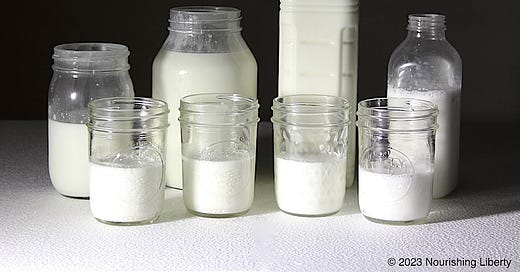Let’s talk about “lactose intolerance” and the enzyme lactase.
Lactose intolerance is a broad term used to explain symptoms people experience when their bodies have trouble digesting dairy–usually the milk sugar, lactose. These symptoms could include bloating, gastrointestinal discomfort, gas, diarrhea, and nausea. They are especially noticeable after c…
Keep reading with a 7-day free trial
Subscribe to Raw Milk Mama to keep reading this post and get 7 days of free access to the full post archives.





